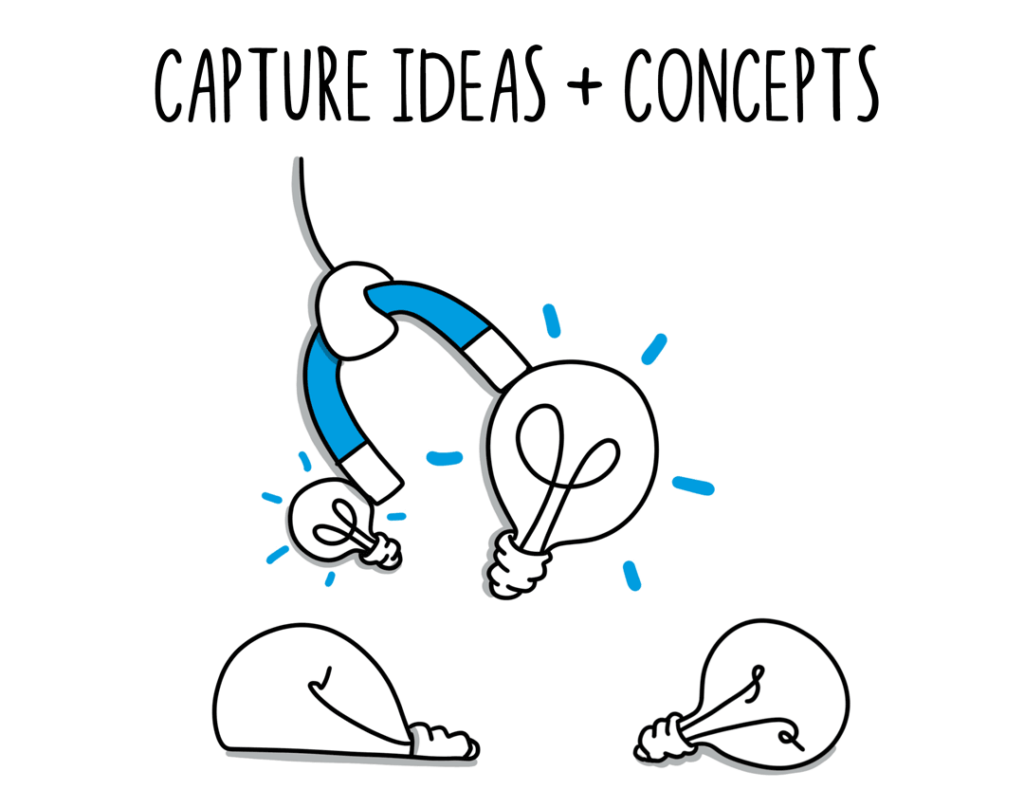What is Visual Thinking? + Icon Pack to Get Started-EN

Andy Baraja
- Digital Innovation
- Article
Visual Thinking is a methodology is based on the use of visual elements and tools to critically think and explain complex concepts. 75% of our brain is designed to better process information through images. Therefore, when we use images correctly to explain content or to try to solve a problem with (apparently) complicated solutions, we obtain an easily understandable and visually very attractive result, which helps with retention. Ultimately, it helps us connect ideas and reach a higher understanding of the situation.

What is Visual Thinking for?
Exercise Your Mind
Visual Thinking helps us exercise the mind. We know that the human brain is divided into two hemispheres: the right is the part that thinks visually, creatively, emotionally, intuitively, empathetically, etc. On the other hand, the left is the part that thinks verbally, linearly, methodically, logically, rationally, etc.

Its true potential is developed when we use the two in combination in a balanced way. When applied, Visual Thinking helps us activate both hemispheres. The left “forces” us to focus our attention on the subject that is being discussed, and the right translates the information we are collecting into images.
Capture Ideas and Important Concepts
To capture the most important ideas, we have to keep in mind that we are oversaturated with information (“infoxicated”). In other words, we live in a changing world that moves at breakneck speed filling us with visual stimuli as it passes. Visual Thinking helps us isolate the most relevant content, centering focus on it, and thus synthesizing and filtering the information.

Communicate Visually
We already know that a picture is worth a thousand words, so by applying this methodology when we transmit any type of information, we will make the recipient unconsciously activate the right side of their brain, anchoring all key concepts.

Have you ever doodled when talking on the phone, in a meeting, a presentation, a training, etc.? The unconscious action of letting your pencil move across a page could leads us to believe that we’re doing it because we aren’t concentrating – but that isn’t true. As Sunni Brown mentions in her TED talk, “Doodlers, unite!”, this is actually one of our brain’s strategies to avoid losing focus. It has a great effect on the ability to creatively solve problems and on the processing of information.
In the learning process, humans have four ways to retain information that allow us to make decisions:
- Visual
- Auditory
- Reading/Writing
- Kinesthetic
In order for us to collect information and make decisions with it, we have to use at least two of these modalities or use one of them together with an emotional experience. Applying intentional drawing involves all four learning modalities while at the same time creating an emotional connection.
Benefits of Using Visual Thinking
- It improves memory, attention, and especially concentration.
- It helps to order and organize ideas in a logical way.
- It allows us to see the information from a global point of view.
- It improves communication and participation.
- It helps enhance creativity, sparking reflection, curiosity, and innovation.
- It strengthens thinking skills.
- It makes learning easier by simplifying complex concepts in a visually understandable way.
When to Apply Visual Thinking
There are many times when Visual Thinking can be applied. For example, during a brainstorming session, creating a visual panel helps our ideas to flow, helps us make connections, and makes it easier to attain innovative solutions. We can also make the most of this methodology by using tools that help us visualize information in order to have a shared understanding, establish ideas, maintain focus, prioritize, and make decisions.
On the other hand, we can apply Visual Thinking in presentations, proposals, reports, or projects by creating our own visual material to support the content and promote understanding, as well as to visualize the information within the different phases of a work process or an ideation/creation process.
How to Apply Visual Thinking
Although there are different Visual Thinking applications, I would like to highlight some that can help in your day-to-day work:
- Sketchnoting or “taking visual notes” will help you create quick summaries in meetings, talks, or courses by using simple but visually powerful graphic resources.
- Graphic facilitation is a method that supports communication, learning, dynamics, or decision-making processes within a group.
- Visual tools are applied to thought, creation, and ideation environments. That is, things like mind maps, bubble maps, empathy maps, journey maps, storyboards, etc.
As I mentioned before, one of the benefits of applying Visual Thinking is the possibility of creating your own visual material (and in our Visual Thinking Fundamentals course you can learn how) adapted to your needs, either in analogue format – pencil and paper – or in digital format.
Here is a pack of 10 hand-drawn icons in .svg (editable) and .png (with a transparent background) so you can see how these types of elements work, for example, in a Power Point presentation. Enjoy!
– Andy
